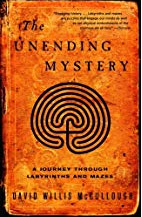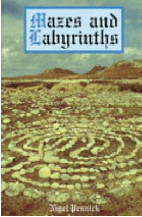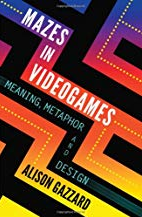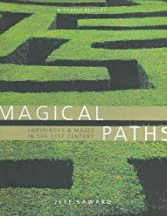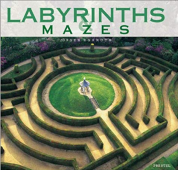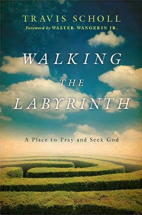Sure, you could use a dictionary, but why not look right here for the maze and labyrinth term definitions you are wondering about. Certainly not a complete list, but it should include most things you are looking for.
ADJUSTABLE MAZES - Real world mazes (Often hedge mazes) that can be changed by using maze gates.
ANFRACTUOSITY - A winding channel or course as in a maze.
ARROW MAZE - A maze where you must follow the direction of the arrows to solve the maze. Or - A maze containing arrows to limit the direction a solver may take the pathways.
AXONOMETRIC - A type of grid that allows a maze creator to draw an object in 3 dimensions on a flat piece of paper by rotating the line of sight.
CAERDROIA LABYRINTH - A type of Welsh turf maze based on the Cretan labyrinth design.
CHAKRA-VYUHA - An Indian labyrinth pattern used to focus a mother during childbirth.
COLOR MAZE - A type of conditional maze that uses color and color patterns to determine path decisions you can make to move forward in the mazes.
CONDITIONAL MAZE - A maze where rules or conditions are established on where you can move.
CORN MAZE - (Maize maze in UK) - A maze made from the strategic planting of corn stalks (or alternatively the removal of corn stalks).
DEAD END - A path in a maze that ends without reaching the goal where you must turn back and choose a new pathway.
DIRECTIONAL MAZE - A maze with one way passages where you must follow the direction indicated. A type of conditional maze.
ENTRANCE - The start of the maze or labyrinth where you enter it, although not all mazes have an entrance !
EXIT - The goal of the maze where you exit. In a labyrinth the exit is typically in the same location as the entrance although there are some exceptions such as a Baltic Wheel Labyrinth.
FREE DRAWN - A maze that does not use a pre-determined grid pattern for structure.
GOAL - The end of a maze !
GRID - A frame of spaced blocks that create the backbone to the design of many maze types.
HEDGE MAZE - A maze whose barriers are made of hedge.
HAND ON WALL SOLVING METHOD - A method of solving a real world maze that works on any “SIMPLY CONNECTED” Maze.
INTERACTIVE MAZE - A maze that changes as you move through it. Often achieved in WATER Mazes.
LABYRINTH - A maze with no decisions or junctions. Moving forward will get you to the goal.
MAZE GATES - Gates used to adjust mazes and change the paths allowing visitors to complete a maze multiple times.
MINOTAUR - A half bull / half human that in mythology was believed to live in the center of the labyrinth at Knossos.
MIRROR MAZE - A maze typically found in a carnival funhouse where the walls are made of mirrors to add complexity (and hopefully a bit of fun) for the solver.
ORIENTATION - Where you are in relation to your surroundings.
PATHWAY - The part of the maze or labyrinth that you travel on for physical paper and digital mazes.
PAVED STONE MAZE - A maze whose path is made of paved stone. borders may be made of earth/turf, ditches of water or stones of different colors than the path to differentiate them.
PUZZLE MAZE - Mazes that require some type of solving in order to determine proper movement in the maze. Examples are a Math maze, number maze, letter maze, and a block move maze.
SPIRAL - A common maze pathway design meant to confuse to solver as lines converge to a central point.
QUICK EXIT - In a real world maze, a quick exit takes you from the GOAL to the exit (often via a bridge or tunnel) so you don’t have to exit the maze by reversing your path.
THESEUS - Greek hero who killed the Minotaur according to legend.
TROY TOWN (OR TROYTOWN) - A name commonly given to turf mazes, especially in England, because in popular legend the city of Troy was laid out in a confusing way to confuse attacking enemies.
UNICURSAL - A single-pathed way with no decision points or junctions. Commonly referred to as a Labyrinth in the US.
WEAVING MAZE - A type of maze where the pathways weave above and below each other and allow the solver to solve in another dimension.
For a more complete list of the different types of mazes and labyrinths with examples and videos I suggest this post:
44 Different Types of Mazes and Labyrinths
And also this page with some fun quotes:





